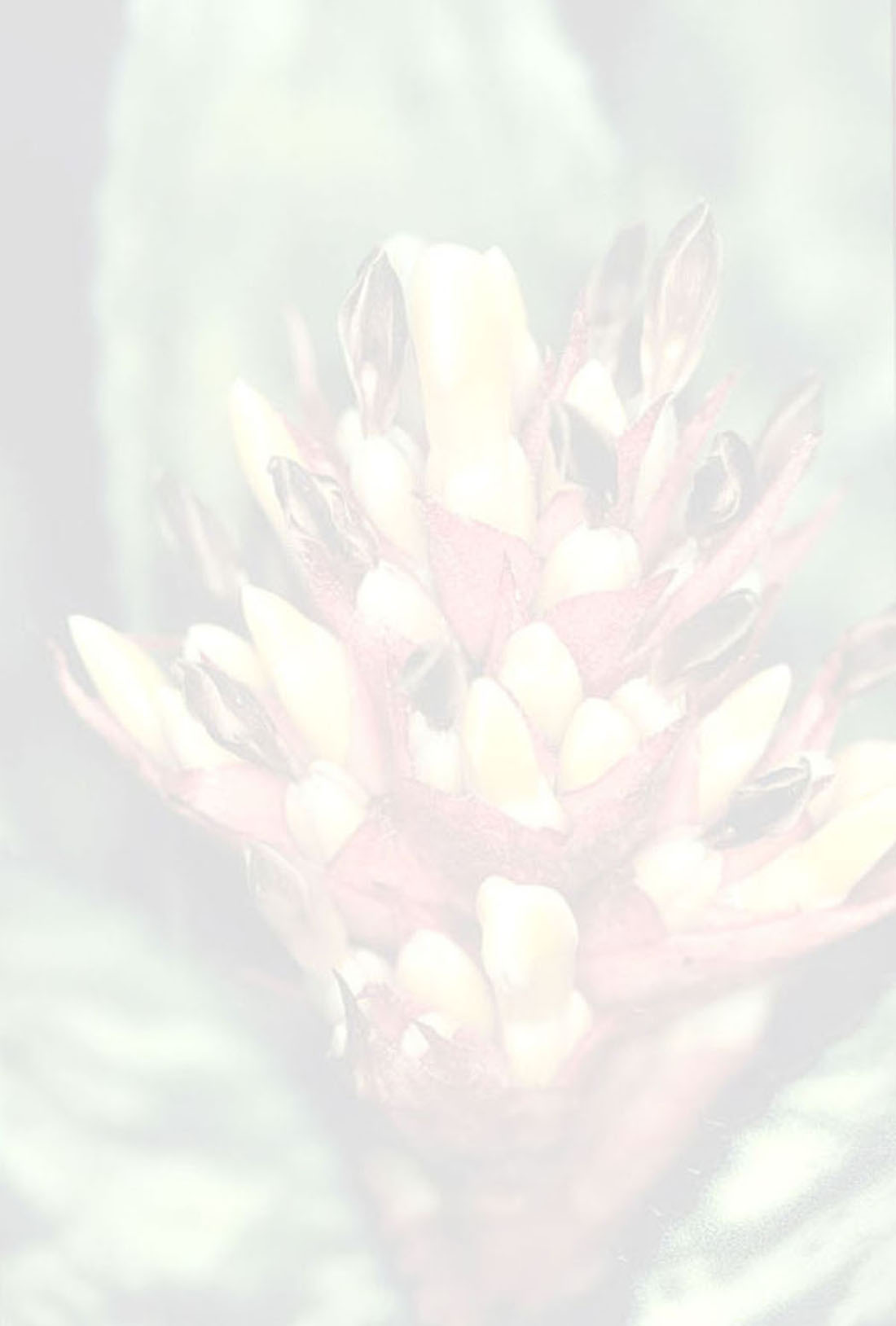


plant stemless, flowering perennial, to 1 m high, propagating by stolons. leaves many in a crateriform rosette, to 1 m long; sheath oblong, 13 cm long, dark purple drying to castaneous, rigid, covered with appressed brown scales; blade linear, attenuate to a cylindric, black, 10 mm long spine, 10 cm wide, broadly channeled, coriaceous, rigid, laxly serrate with black, rigid spines 4 mm long, old blades turning red before anthesis. inflorescence: peduncle 13 cm long, 25 mm thick, erect, woody, covered by the inner leaves; peduncle bracts strict, imbricate, the lower foliaceous, the upper forming an involucre below the inflorescence, broadly ovate, long-acuminate into a pungent, flavous spine, brown-spinose-serrate; fertile part simple, strobiliform, slightly flattened at apex, 7 cm long, 10 cm wide; floral bracts lanceolate, 40–45 mm long, spinose-serrate, mucronate, the upper half pale green and densely white-lepidote beneath, the lower half white and glabrous, enfolding the flower. flowers sessile, erect, 40 mm long, strongly compressed, cleistogamous with maximum development nocturnal; sepals free, asymmetric, 22 mm long, acuminate-mucronate, minutely white-lepidote, the adaxial conduplicate and alate-carinate with narrowly triangular sides, the abaxial narrowly lanceolate; petals 25 mm long, the claws agglutinated, linear with 2 vertical calli each, the blades lanceolate, mucronate, 10 mm long, white-lepidote toward apex, white soon turning brown. stamens included; anther subulate, 8 mm long; pollen spherical, 1–2porate. pistil: ovary 10 mm long, complanate, white-lepidote; epigynous tube 7 mm long; placenta subapical; ovules numerous, obtuse.Edited from (28-04-2013): Smith & Downs 1979. Bromelioideae (Bromeliaceae) in Flora Neotropica.